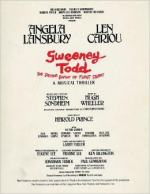|
This section contains 273 words (approx. 1 page at 400 words per page) |

|
In 1830, George Dibden-Pitt penned the story of the fictitious "Sweeney Todd," which was published in a London "penny dreadful," similar to today's tabloids. Like the present day version, this story followed a mad barber who slit his customers' throats before his landlady baked them into pies. The story was well received and Dibden-Pitt soon wrote a popular stage version of the melodrama.
In 1968, British actor Christopher Bond was scheduled to appear in the play but found the show as it was written "crude, repetitive, and simplistichardly any plot and less character development" and so rewrote it, crossing, as he notes, Dumas's The Count of Monte Cristo with Tourneur's The Revenger's Tragedy with a bit of Shakespeare and local "market patter" thrown into the mix. Audiences approved of Bond's version, which was revived periodically until Stephen Sondheim saw it in London in the mid-1970s and...
|
This section contains 273 words (approx. 1 page at 400 words per page) |

|




